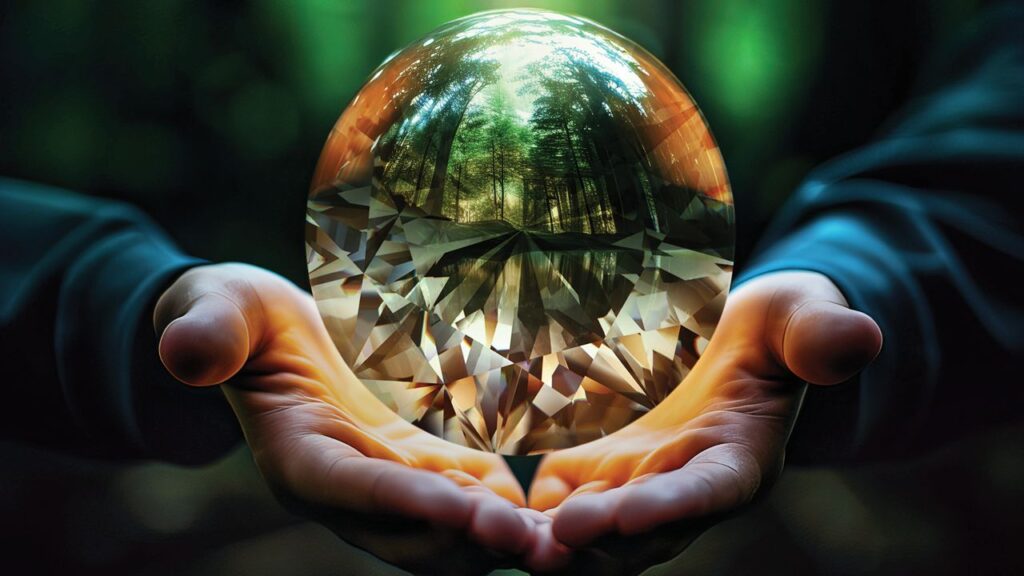
The Rise of Lab Grown Diamonds
In recent years, the diamond industry has witnessed a remarkable shift with the emergence of lab grown diamonds. This innovative approach to diamond production offers an ethical and sustainable alternative to traditional mining practices. As concerns over environmental impact and ethical sourcing continue to grow, organizations like the World Wide Fund for Nature (WWF) are playing a crucial role in promoting sustainable practices within the diamond industry.
Understanding Lab Grown Diamonds
What Are Lab Grown Diamonds?
Lab grown diamonds, also known as synthetic or cultured diamonds, are created through advanced technological processes that simulate the natural conditions in which diamonds form beneath the Earth’s surface. These diamonds have the same physical, chemical, and optical properties as mined diamonds, making them indistinguishable to the naked eye.
The Science Behind Lab Grown Diamonds
Lab grown diamonds are produced using two primary methods: High Pressure-High Temperature (HPHT) and Chemical Vapor Deposition (CVD). HPHT mimics the high pressure and temperature found deep within the Earth’s mantle, while CVD involves the deposition of carbon atoms onto a substrate to grow diamond crystals layer by layer.
Key Differences Between Mined and Lab Grown Diamonds
While the end result may be visually identical, there are significant differences in the process of obtaining lab grown diamonds compared to mined diamonds. Lab grown diamonds have a minimal environmental footprint and are free from the social issues associated with traditional diamond mining, wwF and lab grown diamonds, such as forced labor and conflict financing.
Environmental Impact
Environmental Impact of Diamond Mining
Traditional diamond mining involves extensive land disruption, habitat destruction, and the use of large amounts of water and energy. Additionally, the process of extracting diamonds from the Earth releases carbon emissions into the atmosphere, contributing to climate change.
Land Disruption and Habitat Destruction
Diamond mining often requires the clearing of vast areas of land, leading to deforestation and habitat loss for wildlife. This destruction can have long-lasting ecological consequences, disrupting fragile ecosystems and threatening biodiversity.
Water Pollution and Usage
The mining process also requires significant amounts of water for activities such as washing and processing the ore. This can lead to water pollution through the discharge of untreated mining waste, contaminating local water sources and endangering aquatic life.
Carbon Footprint Comparison
Compared to traditional diamond mining, the production of lab grown diamonds has a significantly lower carbon footprint. By utilizing renewable energy sources and recycling materials, lab grown diamond manufacturers can minimize their environmental impact and contribute to a more sustainable future.
WWF’s Role in Sustainable Practices
WWF’s Mission and Values
The World Wide Fund for Nature (WWF) is a leading international conservation organization dedicated to protecting the planet’s natural resources and biodiversity. With a focus on sustainable development and environmental conservation, WWF works with governments, businesses, lab made diamonds, and communities to promote responsible practices across various industries.
Collaboration with the Diamond Industry
Recognizing the environmental and social challenges associated with traditional diamond mining, WWF has partnered with key stakeholders in the diamond industry to promote sustainable practices and drive positive change. By collaborating on initiatives such as responsible sourcing and certification programs, WWF aims to reduce the environmental footprint of diamond production and ensure fair labor practices throughout the supply chain.
The Shift Towards Lab Grown Diamonds
In recent years, WWF has advocated for the adoption of lab grown diamonds as a more sustainable alternative to mined diamonds. By supporting research and innovation in diamond technology, WWF aims to accelerate the transition towards a more environmentally friendly and ethically sound diamond industry.
WWF’s Certification and Standards
As part of its commitment to promoting sustainability, WWF has developed certification standards for lab grown diamonds to ensure transparency and accountability in the production process. These standards encompass criteria such as energy efficiency, water conservation, and responsible sourcing practices, providing consumers with confidence in the ethical integrity of lab grown diamonds.
Advantages of Lab Grown Diamonds
Ethical Considerations
One of the primary advantages of lab grown diamonds is their ethical sourcing and production process. Unlike mined diamonds, which may be associated with human rights abuses and environmental destruction, lab grown diamonds offer a guilt-free alternative for consumers who prioritize ethical considerations.
Conflict-Free Sourcing
Lab grown diamonds are inherently conflict-free, as they are produced in controlled laboratory settings rather than mined from conflict zones where diamond extraction has fueled violence and exploitation. By choosing lab grown diamonds, consumers can contribute to peace-building efforts and support sustainable development in affected regions.
Traceability and Transparency
Another advantage of lab grown diamonds is their traceability and transparency throughout the supply chain. Manufacturers can provide detailed information about the origin and production process of each diamond, allowing consumers to make informed purchasing decisions based on their values and preferences.
Cost Efficiency
In addition to their ethical and environmental benefits, lab grown diamonds are often more cost-effective than their mined counterparts. By streamlining the production process and reducing overhead costs associated with mining operations, manufacturers can offer lab grown diamonds at a lower price point without compromising on quality or aesthetics.
Challenges and Limitations
Perception and Market Acceptance
Despite their numerous advantages, lab grown diamonds still face challenges in terms of market acceptance and consumer perception. Many consumers are unfamiliar with the concept of lab grown diamonds and may harbor misconceptions about their quality, value, and authenticity compared to mined diamonds.
Misconceptions About Lab Grown Diamonds
One common misconception is that lab grown diamonds are inferior to mined diamonds in terms of beauty and durability. In reality, lab grown diamonds exhibit the same brilliance, hardness, and clarity as mined diamonds, making them a desirable.
